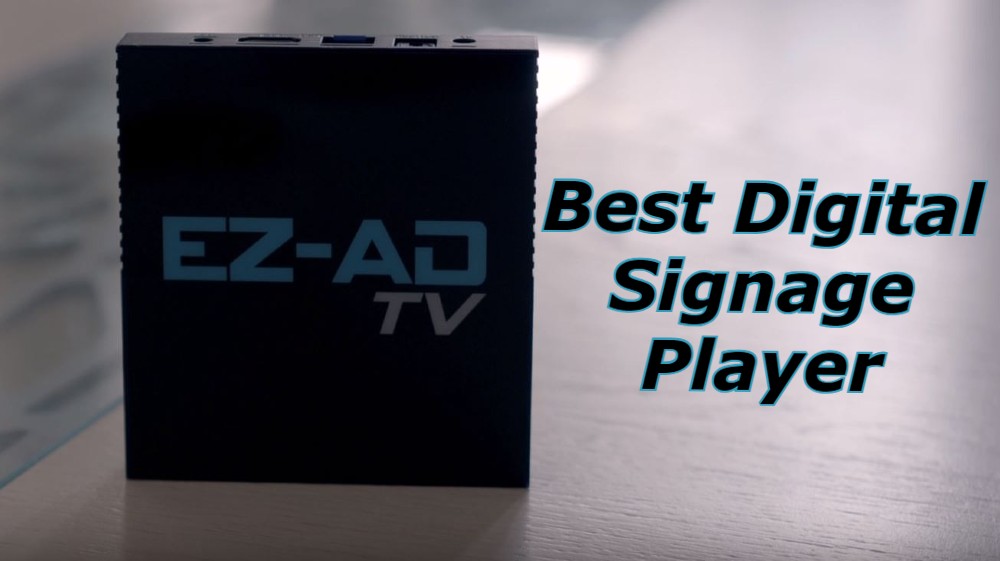As technology continues to evolve at a rapid pace, the future of digital signage media players looks incredibly promising. These devices, which power dynamic and interactive digital displays, are set to undergo significant advancements that will further transform the landscape of communication, marketing, and customer engagement. This article explores the upcoming trends and innovations that will shape the future of digital signage media players.
Integration with Artificial Intelligence (AI)
Personalized Content Delivery
One of the most exciting future trends in digital signage player is the integration of Artificial Intelligence (AI). AI has the potential to revolutionize content delivery by enabling personalized and adaptive messaging. By analyzing data such as customer demographics, behavior, and preferences, AI can tailor the content displayed on digital signs to individual viewers. This level of personalization can significantly enhance engagement and drive higher conversion rates.
Predictive Analytics
AI-powered digital signage media players can also utilize predictive analytics to anticipate customer needs and behaviors. By leveraging historical data and machine learning algorithms, these systems can predict trends and optimize content delivery accordingly. For example, a retail store could predict peak shopping times and adjust its advertising content to promote high-demand products, maximizing sales opportunities.
Enhanced Interactivity and User Engagement
Gesture and Voice Recognition
Future digital signage media players will incorporate advanced gesture and voice recognition technologies, allowing users to interact with displays in more natural and intuitive ways. Gesture recognition will enable touchless interactions, where users can control content with simple hand movements. Voice recognition will allow users to engage with digital signs through spoken commands, making interactions more accessible and engaging.
Augmented Reality (AR) Integration
The integration of Augmented Reality (AR) with digital signage media players is another trend that will redefine user engagement. AR can overlay digital content onto the physical world, creating immersive and interactive experiences. For instance, customers could use their smartphones to scan a digital sign and view 3D product models, interactive tutorials, or virtual try-ons. This blending of digital and physical environments can enhance the shopping experience and drive customer interest.
Internet of Things (IoT) Connectivity
Smart Environment Integration
The Internet of Things (IoT) will play a crucial role in the future of digital signage media players by enabling seamless connectivity between devices. IoT-connected digital signs can interact with other smart devices and sensors within the environment, providing context-aware content. For example, a digital sign in a smart city could display weather updates, traffic information, and nearby points of interest based on real-time data from IoT sensors.
Data-Driven Insights
IoT connectivity will also enhance the ability of digital signage media players to gather and analyze data. By collecting data from various sources, such as foot traffic sensors, environmental sensors, and customer devices, businesses can gain valuable insights into customer behavior and preferences. These insights can inform content strategies and improve the effectiveness of digital signage campaigns.
Advanced Display Technologies
Higher Resolution and HDR
As display technology continues to advance, digital signage media players will support higher resolution screens and High Dynamic Range (HDR) content. This will result in sharper, more vibrant images with greater contrast and color accuracy. Higher resolution and HDR displays will make digital content more visually striking and engaging, enhancing the overall impact of digital signage.
Innovative Display Formats
Future digital signage media players will also support innovative display formats, such as transparent screens, flexible displays, and holographic projections. Transparent screens can be used in retail windows to display dynamic content while allowing customers to see through to the products behind. Flexible displays can wrap around curved surfaces, creating unique and eye-catching installations. Holographic projections can create 3D visuals that appear to float in mid-air, offering a futuristic and immersive experience.
Cloud-Based Content Management
Scalable Solutions
Cloud-based content management systems will become increasingly prevalent in the future of digital signage media players. These systems offer scalable solutions that allow businesses to manage and update content across multiple locations from a central platform. Cloud-based management simplifies the process of deploying and maintaining digital signage networks, reducing operational complexity and costs.
Remote Monitoring and Maintenance
The shift to cloud-based solutions will also enable remote monitoring and maintenance of digital signage media players. Businesses can monitor the status of their digital signs, receive alerts about potential issues, and perform updates or troubleshooting remotely. This capability ensures that digital signage networks remain operational and efficient, minimizing downtime and maximizing performance.
Sustainability and Energy Efficiency
Eco-Friendly Materials
As environmental concerns become more prominent, the future of digital signage media players will prioritize sustainability. Manufacturers will focus on using eco-friendly materials and designing energy-efficient components. Solar-powered digital signs and low-power LED displays are examples of how the industry is moving towards greener solutions.
Energy Management Systems
Future digital signage media players will incorporate advanced energy management systems that optimize power consumption. These systems can adjust the brightness of displays based on ambient light conditions, schedule power cycles to minimize energy use during off-peak hours, and utilize renewable energy sources where possible. By adopting sustainable practices, businesses can reduce their environmental impact while benefiting from the advantages of digital signage.
Conclusion
The future of digital signage media players is bright and filled with exciting possibilities. Integration with AI and IoT, enhanced interactivity, advanced display technologies, cloud-based content management, and a focus on sustainability are just some of the trends that will shape the evolution of this technology. As these innovations continue to unfold, digital signage media players will become even more powerful tools for communication, marketing, and customer engagement, offering endless opportunities for businesses to connect with their audiences in meaningful and impactful ways.





